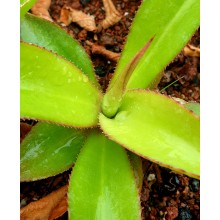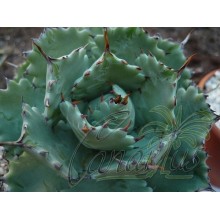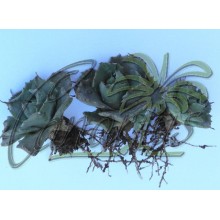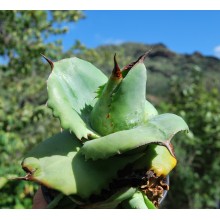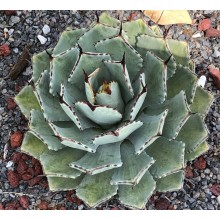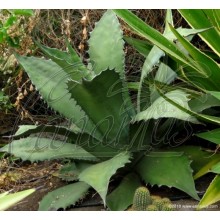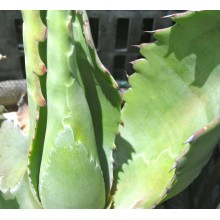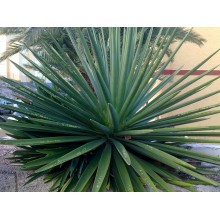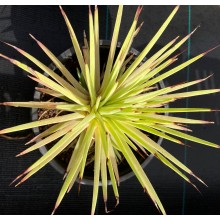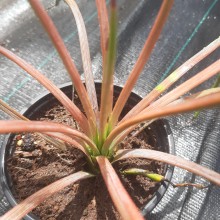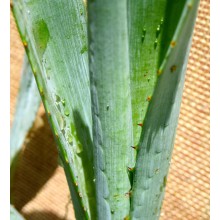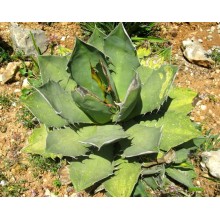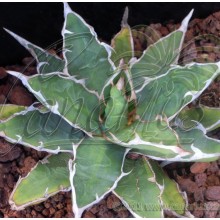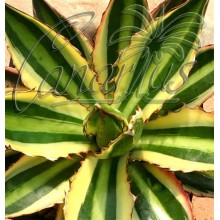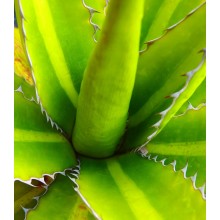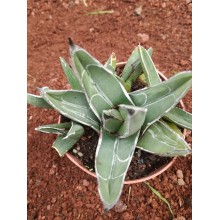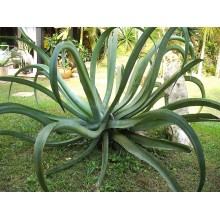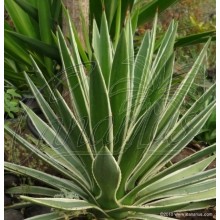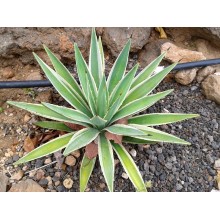Plantas generales Hay 1882 productos.

Si te gustan las plantas exóticas, acabas de llegar al lugar correcto. Canarius ofrece plantas exóticas difíciles de conseguir, que raramente se encuentran en tiendas de jardinería. Nuestra tienda tiene especies naturales, así como híbridos poco frecuentes. Ofrecemos plantas exóticas procedentes de las Islas Canarias.
Los pedidos se envían a cualquier lugar de Europa y también a todo el mundo. Los paquetes llegarán a su casa en pocos días después de ser enviados (tenga en cuenta que también necesitamos algunos días para el procesamiento). No dude en contactar con nosotros si tiene alguna pregunta.
Subcategorías
-
Suculentas
Los desiertos y las áreas secas son el hogar de las plantas más interesantes. Canarius ofrece una selección creciente de plantas suculentas de la máxima calidad, ya que han sido cultivadas al aire libre, bajo el pleno sol de las Islas Canarias.
Las suculentas o "plantas crasas" son especies que retienen agua, que están adaptadas a las condiciones de sequía. Estas plantas almacenan succum (jugo, agua) en sus hojas, tallos o raíces, y con frecuencia muestran un aspecto grueso y carnoso.
-
Exóticas
Las plantas exóticas son especies originarias de otras partes del mundo y que normalmente, tienen un carácter ornamental, una vegetación exuberante, con flores coloridas, formas inusuales... Aquí puede encontrar una gran variedad de plantas exóticas: desde bromelias y heliconias, hasta palmeras y plantas de interior.
Las plantas exóticas no tienen un uso específico. Los coleccionistas compran este tipo de plantas por su rareza, para decoración interior o exterior, en función de sus características. -
Frutales y Medicinales
Los árboles frutales, las hierbas y las plantas medicinales nos permiten mejorar nuestra salud y alimentación. En esta sección, cada tipo de planta tiene efectos saludables, tanto los frutales (Feijoa, piña, Fina de Jete...), como plantas para la salud, como Graviola, Aloe vera, Callisia fragrans...
En el metabolismo normal de todos seres vivos, el organismo produce algunas sustancias a partir de los nutrientes presentes en el entorno; algunos de estos químicos son parte del proceso en todo (o casi todo) tipo de especies. Normalmente, los componentes útiles están concentrados en algunas de sus partes: hojas, semillas, flores...
¡Encuentre su planta saludable y cómprela online!
-
Especiales
En canarius.com tratamos de ir más allá de los límites en el campo de la botánica. En nuestra tienda en línea tratamos de facilitar la compra de plantas de cualquier parte del mundo. Por eso, cultivamos desde las especies más comunes hasta las plantas más especiales, como podrá ver en esta sección.
-
Agave pendula
Agave pendula
Quite different and attractive, this agave has few leaves and they are fleshy and soft, with a pale green colour, reminiscent of Agave attenuata.
24,30 € -
Agave potatorum
Agave potatorum
14-18 cm pot, bare rooted - Small to medium sized, compact Agave with embossed glaucous leaves. Margins are undulate and armed with reddish-brown spines. It is a mountain species from southern Mexico, found at 1300 to 2300 m (4500 to 7500 ft.).
11,30 € -
Agave potatorum 'Shoji Rajin'
Agave potatorum 'Shoji Rajin'
Agave of 5-7 cm (2-3 in). Dwarf Japanese selection of Agave potatorum. It is very compact and grows only to 5-10 cm (2-4") in diameter. Leaves are wide, thick and dusty blue, with few spines.
12,00 € -
Agave potatorum 'Short Form'
Agave potatorum 'Short Form'
Small sized, compact Agave with short rounded leaves. This selection is especially attractive with a lovely leaf shape. It is easy to grow and hardy, just as the more widespread forms of Agave potatorum, with the typical glaucous leaves with maroon-black spines.
24,50 € -
Agave potatorum ‘Kichiokan’
Agave potatorum ‘Kichiokan’
14-18 cm pot, bare rooted - Small to medium sized, compact Agave with embossed glaucous leaves. Margins are undulate and armed with reddish-brown spines. It is a mountain species from southern Mexico, found at 1300 to 2300 m (4500 to 7500 ft.).
23,40 € -
Agave salmiana var. ferox
Agave salmiana var. ferox
10 cm cutting. A giant in the genus, the ferocious classic Agave ferox can take some frost and snow.
11,70 € -
Agave sisalana
Agave sisalana
NEW - 14-18 cm. This is a millenary crop plant grown for fibres named sisal. It originated in Mexico, Chiapas, and is widelycultivated elsewhere. It is probably a sterile cultivar derived from A. vivipara.
11,80 € -
Agave stricta 'nana'
Agave stricta 'nana'
This small agave has become very popular during the past years because of a lot of reasons. It is an official beauty, spineless except at the tip, with green-blue leaves.
20,80 € -
Agave Tenuifolia
Agave Tenuifolia
Agave tenuifolia features slender tufts of flexible, arching, blue-green foliage. Lax rosettes form loose clumps.
14,70 € -
Agave tequilana
Agave tequilana
The famous tekila drink is produced with this species with grey-blue leaves. Agave tequilana is only known in cultivation, and was never found in the wild, but it was possibly originally native to Jalisco in Mexico. It is a large plant with straight grey-blue leaves. It is hardy to light frost, to about - 3 C.
12,30 € -
Agave triangularis
Agave triangularis
NEW !- Olive-green leaves, finely asperous, with a broad paler band running down the center. Native to an arid calcareous region in Teuhuacan, Puebla, at 1650-1950 m elevation. Slow growing, attaining 50-80 cm in diameter. It will stay smaller in pots.
17,20 € -
Agave univittata 'Quadricolor'
Agave univittata 'Quadricolor'
20-22 cm diameter. Exciting garden selection of a small, frost-hardy agave. Rosettes are compact, tidy and four-coloured (quadri-color). This variegated cultivar will survive - 5 C (23 F) and even less if kept dry.
15,80 € -
Agave univittata 'Quadricolor'- LARGE
Agave univittata 'Quadricolor'- LARGE
20-22 cm diameter. Exciting garden selection of a small, frost-hardy agave. Rosettes are compact, tidy and four-coloured (quadri-color). This variegated cultivar will survive - 5 C (23 F) and even less if kept dry.
39,20 € -
Agave univittata 'Splendida'
Agave univittata 'Splendida'
This small, frost-hardy agave is a non-hybrid clone selected in cultivation, with enhanced colours. Leaves are darker, with a paler central stripe, all is glossy and the leaf margins are almost white. It is frost resistant to -15 C or more if kept dry!
27,50 € -
Agave victoriae-reginae 'Ferdinandi-regis'
Agave victoriae-reginae 'Ferdinandi-regis'
Until recently, Agave ferdinandi-regis was considered a fully different species. It is a very elegant Agave, less compact than victoriae-reginae with dark reddish brown edges (not silvery). It is solitary or very slow to sucker, globose, slow growing up to 45 cm.
17,20 € -
Agave vilmoriniana
Agave vilmoriniana
A totally different spineless Agave unlike any other, with a smooth spreading rosette of elegantly curving leaves. Its unmistakeable "octopus shape" is a highlight both in a succulent collection and in the exotic garden.
26,40 € -
Agave vivipara 'marginata'
Agave vivipara 'marginata'
13-17 cm. This is a popular species, commonly seen in Mexican and Caribbean gardens. Fantastic shape with olive-green leaves with white margins and black spines.
11,40 €
En estos momentos tenemos pocos productos en esta categoría Plantas generales




















